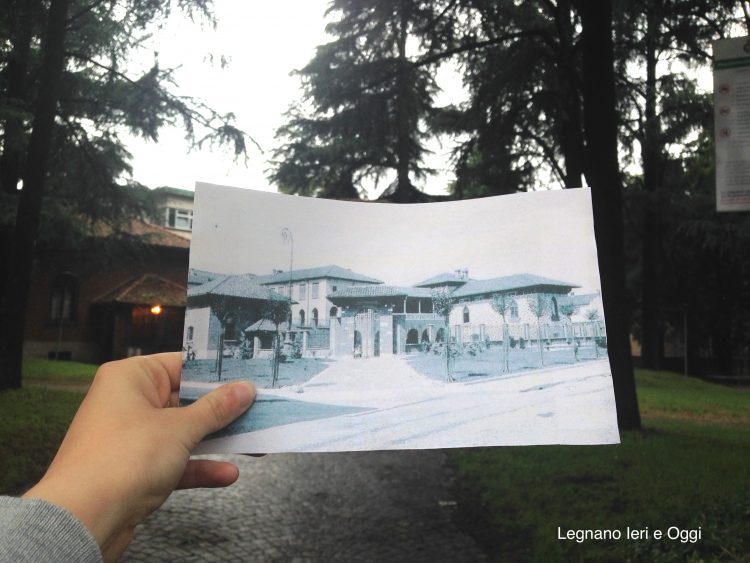È stato allestito nel 1929 grazie alla volontà di Guido Sutermeister, che fece un’assidua ricerca archeologica sul territorio tra il 1925 e il 1964. Le collezioni si sono poi arricchite con materiale giunto al museo da scavi della Soprintendenza Archeologica della Lombardia e da donazioni di privati.
La maggior parte dei reperti archeologici esposti al museo risale a un periodo compreso tra la preistoria e l’epoca medioevale longobarda, con particolare riferimento all’età romana imperiale. I ritrovamenti conservati testimoniano la frequentazione della zona fin dall’Età del rame e l’esistenza di una civiltà stanziale sin dall’Età del bronzo. All’interno del museo, fino al 2012, erano presenti anche le tre grandi tele di Gaetano Previati, pittore ferrarese vissuto tra la seconda metà dell’Ottocento e i primi del Novecento, rappresentanti i tre momenti fondamentali della battaglia di Legnano: la Preghiera, la Battaglia e la Vittoria. Le opere sono state trasferite nella sezione “Spazio Castello” al castello di Legnano.

Nel 2004 il museo civico Sutermeister è diventato “sede museale certificata”; con questo riconoscimento, che è stato conferito dalla Regione Lombardia, il polo espositivo legnanese ha acquisito ufficialmente lo status di “museo”.
L’edificio che ospita il museo riprende lo stile architettonico del Maniero Lampugnani, dimora quattrocentesca di una delle nobili famiglie della zona. Questo palazzo gentilizio, che si trovava tra la moderna strada statale del Sempione e il fiume Olona, più o meno presso largo Franco Tosi, è stato demolito nel 1927. Il museo, che sorge più a nord rispetto all’antico Maniero Lampugnani, è stato costruito nei pressi del convento di Sant’Angelo, ora non più esistente.

Per la costruzione del complesso museale sono stati utilizzati alcuni resti originali del Maniero Lampugnani recuperati durante la demolizione dell’edificio: soffitti lignei a cassettoni, colonne e camini. Dalla demolizione si è anche salvata una mensola in cotto raffigurante un putto. Questa mensola, che faceva parte di una finestra del Maniero Lampugnani e che riporta scolpito l’anno 1420, è ospitata all’interno del museo.
It was set up in 1929 by the will of Guido Sutermeister, who made assiduous archaeological research in the area between 1925 and 1964. The collections are also enriched with material arrived at the museum from excavations of the Archaeological Superintendence of Lombardy and donations private.
Most of the archaeological finds on display at the museum dates back to a period between the prehistory and the Lombard Middle Ages, with particular reference to Roman Empire. The findings testify kept frequenting the area since the Age of the copper and the existence of a settled civilization since the Bronze. Inside the museum, until 2012, was also attended by the three large canvases by Gaetano Previati, Ferrarese painter who lived between the second half of the nineteenth and early twentieth century, representatives of the three key moments of the battle of Legnano: the prayer, the battle and Victory. The works were transferred in the “Space Castle” at the castle of St. George.
In 2004 the museum Sutermeister has become “certified museum”; with this award, which was awarded by the Lombardy Region, the exhibition grounds legnanese officially acquired the status of “museum.”

The building that houses the museum reflects the architectural style of Lampugnani Manor, fifteenth-century residence of one of the noble families in the area. This noble mansion, which was located between the modern state road Sempione and the river Olona, more or less at off Franco Tosi, was demolished in 1927. The museum, which is located to the north of the ancient Manor Lampugnani, was built near the convent of Sant’Angelo, now no longer exists.
For the construction of the museum complex we were used some original remains of the Manor Lampugnani recovered during the demolition of the building: coffered wood ceilings, columns and fireplaces. The demolition has also saved a shelf terracotta features a child. This shelf, which was part of a window of the Manor Lampugnani and reporting carved the year 1420, is housed in the museum.
